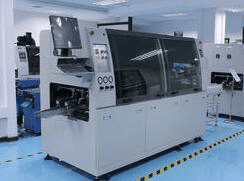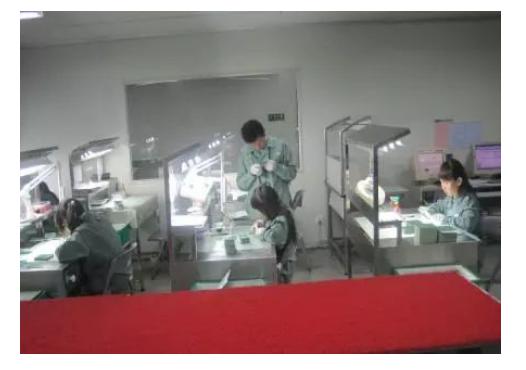Introduction
Printed circuit boards (PCBs) are an essential component of most electronic devices and products. As products become more complex, getting working prototypes fabricated quickly is crucial for validating designs and meeting project deadlines. This is where quick-turn PCB assembly services come in.
Quick-turn assembly refers to the rapid production of assembled PCBs, with lead times ranging from 24 hours to around 10 days. For companies and engineers with urgent prototyping needs, partnering with a PCB assembly provider that offers quick-turn services can accelerate development cycles and time-to-market.
This guide will provide an overview of quick-turn PCB assembly, including its benefits, what to look for in a quick-turn assembler, and key factors that affect turnaround time. We’ll also discuss cost considerations and review some of the top providers of fast PCB assembly services.
What is Quick-Turn PCB Assembly?
Quick-turn PCB assembly refers to the rapid fabrication and assembly of printed circuit boards, with the goal of providing functional boards in the shortest time possible. This accelerated service is ideal for prototyping small batches of boards, when you need working prototypes in hand quickly to evaluate and test designs.
The PCB manufacturing process normally includes the following steps:
- PCB Fabrication – Producing the bare PCB from multilayer lamination or other process. This includes processes like drilling, routing, imaging, plating, and finishing.
- PCB Assembly – Soldering electronic components onto the fabricated PCB. This includes SMT (surface mount technology) placement and soldering, and sometimes through-hole component insertion.
- Testing – Testing the assembled board for defects and functionality. Testing can include in-circuit test (ICT), flying probe, and functional testing.
Quick-turn PCB assembly combines fast fabrication and assembly to provide fully tested boards in the fastest time possible. While standard assembly time is around 15 business days, quick-turn assembly can deliver in as little as 24 hours.

Benefits of Quick-Turn PCB Assembly
Here are some of the key benefits of using quick-turn services for PCB assembly:
- Faster time-to-market – Getting working prototypes faster allows you to validate designs sooner and reduce overall product development timeline.
- Accelerate testing – Start critical testing phases earlier, such as design verification, compatibility, and reliability testing.
- Iterate faster – If changes are needed, new revs can be turned much quicker.
- Meet urgent project deadlines – Get working boards in hand when you have hard deadlines to hit.
- Respond to customer needs – If customers need a proof of concept or samples quickly, fast turnaround can help meet demands.
- Lower costs – The ability to speed up development can lower overall project costs and overheads.
For many companies, accelerating time-to-market and meeting tight deadlines make quick-turn assembly services well worth the premium cost over standard turn times. The faster you can test your prototypes, the quicker you can start refining and finalizing designs.
What to Look for in a Quick-Turn Assembly Provider
If you plan to leverage quick-turn PCB assembly for your projects, partnering with the right provider is key. Here are some of the most important factors to evaluate:
Turnaround Time Capabilities
Of course, speed is the name of the game with quick-turn assembly. You’ll want to look for providers that can consistently deliver within your desired timeframe. This can range from 24-48 hours for extremely urgent orders, up to 10 business days for less rushed projects.
Ask potential partners about their turnaround time capabilities, both for bare PCB fabrication and fully assembled boards. Many also offer expedited SMT assembly and other options to accelerate certain stages as needed.
Prototyping Experience and Volume Capabilities
You’ll want an assembler that has extensive experience supporting prototyping and new product introduction (NPI) projects. They should be able to expertly handle lower volume orders from just a few boards up to a couple hundred units.
Additionally, choose a partner with the in-house resources, staffing, and flexible processes to accommodate quick-turn orders. Larger volume production runs often operate on a different model, so a focus on fast-turn prototyping is ideal.
Range of Assembly Services Offered
Look for an assembler that provides a full range of assembly services to give you more flexibility and one-stop support. This includes:
- SMT assembly with support for fine-pitch components
- Through-hole assembly
- Component procurement if you need help sourcing parts
- Design for Manufacturing (DFM) reviews to optimize your design for assembly
- Testing services like flying probe testing and in-circuit test (ICT)
- Programming and loading firmware onto boards
The more services offered in-house, the faster the full assembly process can be completed.
Quality and Reliability Processes
For prototypes and pre-production units when speed is critical, you don’t want to skimp on quality either. Seek out partners following strict quality control and inspection processes. They should be able to work quickly while still adhering to high reliability standards.
Ask about their processes, equipment used, certifications held, and any warranty or guarantee they provide on quick-turn orders.
Location and Logistics
Choosing an assembler located close to your facility can help reduce shipping time and delays. If looking overseas, inquire about their shipping methods and logistics processes to maintain quick delivery.
Domestic assemblers with multiple manufacturing sites can also be helpful by shifting production between locations as needed to meet deadlines.

Key Factors Affecting Turnaround Time
When planning your quick-turn PCB project, there are several key factors to keep in mind that can impact overall turnaround time:
Board Complexity
More complex board designs with high component density or advanced component technologies like HDI (high density interconnect) will require more fabrication and assembly time. Let your assembler know upfront if your board uses components requiring specialized equipment or processes.
Component Availability
If any parts needed for assembly have long lead times or constrained supply, this can hold up production. Work with your assembler and component suppliers to check stock availability for all bill of materials (BOM) items. Using alternate components can help avoid delays.
Order Quantity
For single boards or other very low quantities, production time is minimized since boards can be handled in a quick short run. Larger orders may require more time, even just 10-25 boards. Grouping boards into small batches helps speed things along.
Testing Needs
Allow time for performing any required testing like ICT or functional testing at the end. Specifying testing needs upfront ensures the process is accounted for in the timeline.
Delivery Method
Use a fast shipping method when boards absolutely must arrive as quickly as possible. Shipping time can sometimes rival production time.
By understanding these key factors and optimizing accordingly, you can shave precious time off of your quick-turn assembly order. Be sure to communicate project needs and constraints to your assembler so they can provide accurate turnaround estimates.
Cost Considerations for Quick-Turn Services
Of course, the accelerated timeline of quick-turn assembly comes at a premium. Here are some of the cost factors to keep in mind:
- Rush fees – Most assemblers charge rush fees on top of standard pricing to prioritize quick-turn orders in production. These fees range from 25-100% typically.
- Expedited shipping – If using expedited shipping to reduce overall turnaround time, the added shipping cost must be factored.
- ** Minimum order fees** – Some assemblers charge an additional fee for orders below a certain quantity threshold.
- Component rush fees – You may pay premiums for any long lead time components that must be expedited.
- Potential yield loss – Rushing complex boards can sometimes reduce assembly yield and functional boards.
Quick-turn services provide enormous time savings, but weigh the benefits vs. premium costs for your particular project needs. For vanilla prototypes without complex BOMs or technology risks, standard turn times around 10 days can suffice.
Talk to potential partners about ways to optimize pricing, such as grouping boards into batches or scheduling orders during slower production weeks.
Top Quick-Turn PCB Assembly Providers
Many PCB assembly providers now offer quick-turn services catered to urgent prototyping needs. Here are some of the top assemblers known for fast assembly and quality:
| Assembly Partner | Location | Turnaround Time | Min. Order Quantity |
|---|---|---|---|
| Advanced Circuits | Colorado, USA | 24-48 hours | 25 boards |
| PCBWay | China | 24-36 hours | 5 boards |
| JLCPCB | China | 24 hours | 5 boards |
| Sierra Circuits | California, USA | 24 hours | No minimum |
| Sunstone Circuits | Oregon, USA | 48 hours | 2-4 boards |
| Screaming Circuits | Arizona, USA | 1-3 days | No minimum |
| Rush PCB | UK | 3 days | No minimum |
This list covers some of most trusted quick-turn assembly providers used by hardware startups and engineers across the globe. They offer a range of capabilities from bare board fabrication to full turnkey assembly.
Be sure to get multiple quotes before selecting your assembler, as quick-turn pricing can vary widely. Weigh their capabilities, experience, and costs against your specific prototype needs.
Conclusions
Quick-turn PCB assembly provides an invaluable tool for companies in competitive, fast-paced industries such as consumer electronics, IoT, and automotive tech. By partnering with an experienced assembler offering fast-turn services, you can compress development timelines and achieve a first-mover advantage with new products.
The key is choosing the right partner that can reliably deliver quality boards and support your specific prototyping needs. Focus on assemblers with proven expertise in low to medium volume runs. Clearly communicate project requirements and constraints in order to get an accurate turnaround estimate.
While quick-turn services come at a premium cost, the enormous time savings usually make the investment well worth it. Getting to market faster ultimately reduces overheads and provides a competitive edge in launching new innovations.
Frequently Asked Questions (FAQ)
What is the typical cost for quick-turn PCB assembly?
Costs can range widely based on board complexity, order quantity, and component selection. As a rough estimate, budget $1000 to $3000+ for a small quick-turn assembly order of just a few boards. Expect to pay rush fees on top of standard pricing.
Can quick-turn boards be ordered individually or is there a minimum?
Many assemblers offer quick-turn services starting at just 1 or 2 boards, while some require 5-10 board minimums. Single boards can often be delivered the quickest.
What components are best to avoid for quick-turn assembly?
Long lead-time components that require many weeks can hold up quick-turn production, so try to avoid these. Less common chip package sizes that assemblers may not stock are also best to avoid.
How can I optimize my design for fast assembly?
Use only easily sourced components, allow extra clearance around tight components, include test points, avoid 01005 chips, and call out any special assembly notes clearly.
Does quick-turn limit the testing that can be performed?
Full testing like ICT may still be possible but discuss with your assembler. Prioritize essential tests and expect to potentially compromise on 100% testing for the fastest orders. Flying probe testing is commonly used.



0 Comments